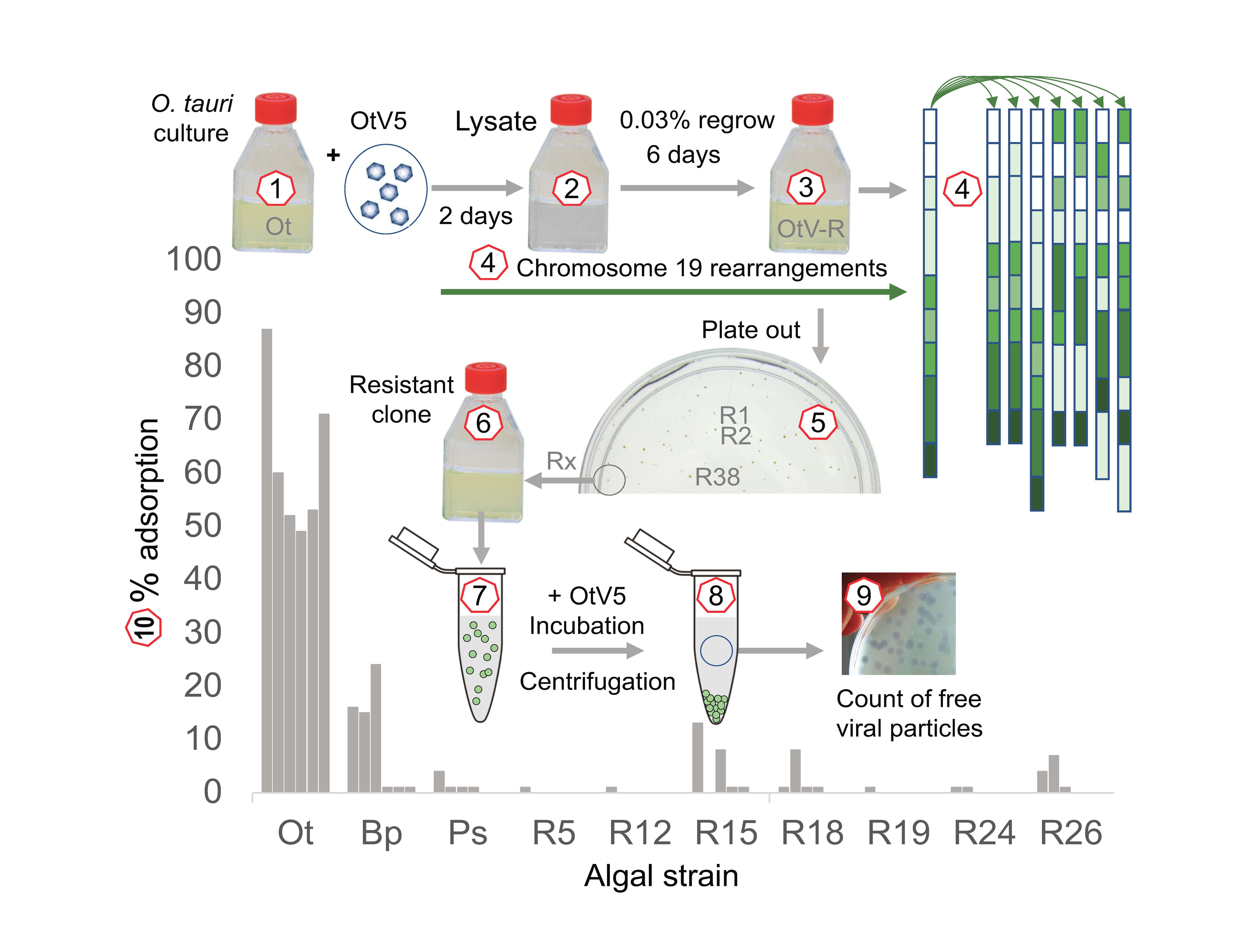Prasinoviruses are large dsDNA viruses commonly found in aquatic systems worldwide, where they can infect and lyse unicellular prasinophyte algae such as Ostreococcus. Host susceptibility is virus strain-specific, but resistance of susceptible Ostreococcus tauri strains to a virulent virus arises frequently. In clonal resistant lines that re-grow, viruses are usually present for many generations, and genes clustered on chromosome 19 show physical rearrangements and differential expression. Here, we investigated changes occurring during the first two weeks after inoculation of viruses. By serial dilutions of cultures at the time of inoculation, we estimated the frequency of resistant cells arising in virus-challenged O. tauri cultures to be 10−3–10−4 of the inoculated population. Re-growing resistant cells were detectable by flow cytometry 3 days post-inoculation (dpi), visible re-greening of cultures occurred by 6 dpi, and karyotypic changes were visually detectable at 8 dpi. Resistant cell lines showed a modified spectrum of host-virus specificities and much lower levels of OtV5 adsorption.

